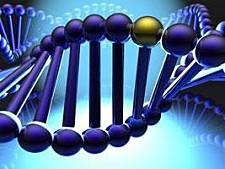Cells deficient in thymidine kinase (TK) due to the mutation TK+/- -Õ TK-/- are resistant to the cytotoxic effects of the pyrimidine analogue trifluorothymidine (TFT). Thymidine kinase proficient cells are sensitive to TFT, which causes the inhibition of cellular metabolism and halts further cell division. Thus mutant cells are able to proliferate in the presence of TFT, whereas normal cells, which contain thymidine kinase, are not. Similarly, cells deficient in HPRT or XPRTare selected by resistance to 6-thioguanine (TG) or 8-azaguanine (AG). The properties of the testsubstance should be considered carefully if a base analogue or a compound related to the selective agent is tested in any of the mammalian cell gene mutation tests. For example, any suspected selective toxicity by the test substance for mutant and non-mutant cells should be investigated.
Thus,performance of the selection system/agent must be confirmed when testing chemicals structurally related to the selective agent. Cells in suspension or monolayer culture are exposed to the test substance, both with and without metabolic activation, for a suitable period of time and subcultured to determine cytotoxicity and to allow phenotypic expression prior to mutant selection. Cytotoxicity is usually determined by measuring the relative cloning efficiency (survival) or relative total growth of the cultures after the treatment period. The treated cultures are maintained in growth medium for a sufficient period of time, characteristic of each selected locus and cell type, to allow near-optimal phenotypic expression of induced mutations. Mutant frequency is determined by seeding known numbers of cells in medium containing the selective agent to detect mutant cells, and in medium without selective agent to determine the cloning efficiency (viability). After a suitable incubation time, colonies are counted. The mutant frequency is derived from the number of mutant colonies in selective medium and the number of colonies in non-selective medium.
A variety of cell types are available for use in this test including subclones of L5178Y,CHO, AS52, V79, or TK6 cells. Cell types used in this test should have a demonstrated sensitivity to chemical mutagens, a high cloning efficiency and a stable spontaneous mutant frequency. Cells should be checked for mycoplasma contamination and should not be used if contaminated. At least four analysable concentrations should be used. Where there is cytotoxicity, these concentrations should cover a range from the maximum to little or no toxicity;
Cells should be exposed to the test substance both in the presence and absence of anappropriate metabolic activation system. The most commonly used system is a co-factorsupplemented post-mitochondrial fraction (S9) prepared from the livers of rodents treated with enzyme-inducing agents such as Aroclor 1254 (15)(16)(17)(18) or a combination of phenobarbitoneand ß-naphthoflavone (19)(20).
Concurrent positive and negative (solvent or vehicle) controls both with and without metabolic activation should be included in each experiment. When metabolic activation is used the positive control chemical should be one that requires activation to give a mutagenic response.
At the end of the exposure period, cells are washed and cultured to determine survival andto allow for expression of the mutant phenotype. Measurement of cytotoxicity by determining the relative cloning efficiency (survival) or relative total growth of the cultures is usually initiated after the treatment period.
